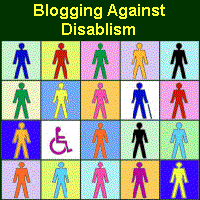Hiring People with Disabilities is Expensive: Myth Busted

(Photo credit: Stephen Hyun)
In the United States, October is National Disability Employment Month: a month devoted to increasing public awareness of the contributions and skills of employees with disabilities. In this day of labour shortages in various sectors, unemployment of people with disabilities still remains high at approximately 45%, according to the Office of Disability Employment Policy. The unemployment rate of Canadians with disabilities is equally as high.
People with disabilities face many false stereotypes and myths when searching for employment. One such myth is accommodating a person with a disability in the workplace is expensive. With this in mind, I would like to share the special equipment and technology that I use during my work day (many of which I demonstrate using in my video):
- A standard keyboard without additional keys above the function keys so that I can glide my hand along the top to steady my hand while typing. (Keyboards without the additional multimedia and internet keys are becoming harder to find.)
(Cost $20) - An Esterline Joystick gives me greater control than with a mouse. (Cost $600)
- Words+ EZ Keys software for word prediction and completion to save me a bit of typing. (Cost $695)
- TextAloud softwarefor proofreading my writing and for converting text into mp3 audio files when I give presentations. (Cost $30)
- NeoSpeech’s Kate is my voice. (Cost $35)
- Skype provides me with another means of communication. I can use either the text chat while the other speaks or texts, or I can use my webcam while speaking (people understand Glenda-ish better when they can see me speak) and then I use the text feature when we get stuck on a word or two. (free when chatting with other Skype users)
The total cost of the extra technology I use is approximately $1380. Putting this into perspective, is this amount any more than signing bonuses or car allowances offered to other potential employees?
According to the Job Accommodation Network, the average cost to accommodate an employee with a disability is $500. (I’m above average!) Some funding and tax incentives are available to cover these costs.
Myth: It is expensive to accommodate people with disabilities in the workplace. BUSTED!



 Subscribe via RSS
Subscribe via RSS



